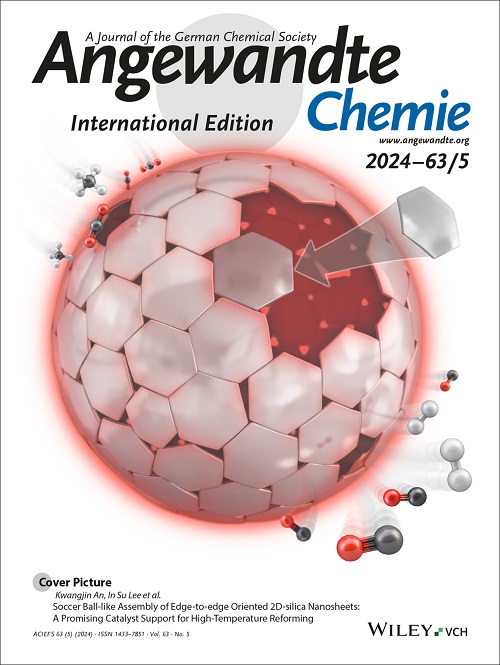阳离子铱配合物催化还原胺化及酯类胺化-烷基化反应
IF 16.1
1区 化学
Q1 CHEMISTRY, MULTIDISCIPLINARY
引用次数: 0
摘要
本文报道了一种简便、高效的一锅催化还原胺化方法,以及第一个多组分串联还原胺化方法——台架稳定、易得的常见羧酸酯功能化。该方法是基于阳离子[Ir(COD)2] barf催化的酯类化学选择性硅氢化反应,然后是一锅酸介导的胺化和亲核加成。反应在温和的条件下进行,催化剂的负载很低(0.1 mol%的Ir),可以进一步降低到0.001 mol%,如15 g规模的反应所示。该方法具有高度通用性,允许使用带α-质子或不带α-质子的酯进行伯胺和仲胺的n -单烷基化反应,以生产各种仲胺和叔胺,以及α-支化/功能化胺。该方法具有高度的化学选择性,可耐受多种官能团,如溴、三氟甲基、酯和氰基。通过一步催化合成两种生物相关的n -单甲基α-氨基酯和抗帕金森剂匹瑞贝地尔,以及使用两种短链甘油三酯作为烷基化原料,证明了该方法的价值。本文章由计算机程序翻译,如有差异,请以英文原文为准。
Catalytic Reductive Amination and Tandem Amination–Alkylation of Esters Enabled by a Cationic Iridium Complex
Reported herein is a convenient and efficient method for one-pot, catalytic reductive amination, as well as the first multi-component tandem reductive amination - functionalization of bench-stable and readily available common carboxylic esters. This method is based on the cationic [Ir(COD)2]BArF-catalyzed chemoselective hydrosilylation of esters, followed by one-pot acid-mediated amination and nucleophilic addition. The reaction was conducted under mild conditions at a very low catalyst loading (0.1 mol% of Ir), which could be further reduced to 0.001 mol%, as demonstrated by a reaction at a 15 g scale. The method is highly versatile, allowing the use of esters with or without α-protons for the N-mono-alkylation of primary and secondary amines to produce diverse secondary and tertiary amines, as well as α-branched/functionalized amines. The method is highly chemoselective and tolerates a variety of functional groups such as bromo, trifluoromethyl, ester, and cyano groups. The value of the method was demonstrated by the one-step catalytic synthesis of two bio-relevant N-mono-methyl α-amino esters and the antiparkinsonian agent piribedil, as well as by the use of two shorter chain triglycerides as alkylating feedstock.
求助全文
通过发布文献求助,成功后即可免费获取论文全文。
去求助
来源期刊
CiteScore
26.60
自引率
6.60%
发文量
3549
审稿时长
1.5 months
期刊介绍:
Angewandte Chemie, a journal of the German Chemical Society (GDCh), maintains a leading position among scholarly journals in general chemistry with an impressive Impact Factor of 16.6 (2022 Journal Citation Reports, Clarivate, 2023). Published weekly in a reader-friendly format, it features new articles almost every day. Established in 1887, Angewandte Chemie is a prominent chemistry journal, offering a dynamic blend of Review-type articles, Highlights, Communications, and Research Articles on a weekly basis, making it unique in the field.

 求助内容:
求助内容: 应助结果提醒方式:
应助结果提醒方式:


